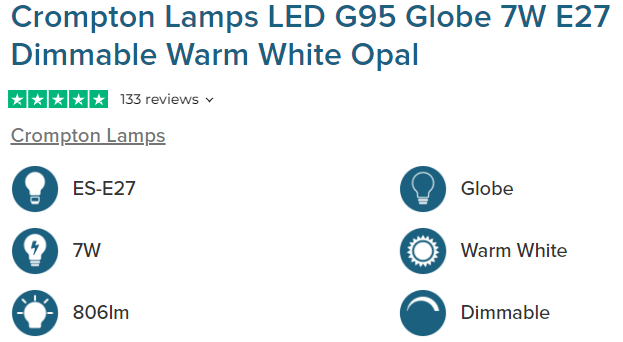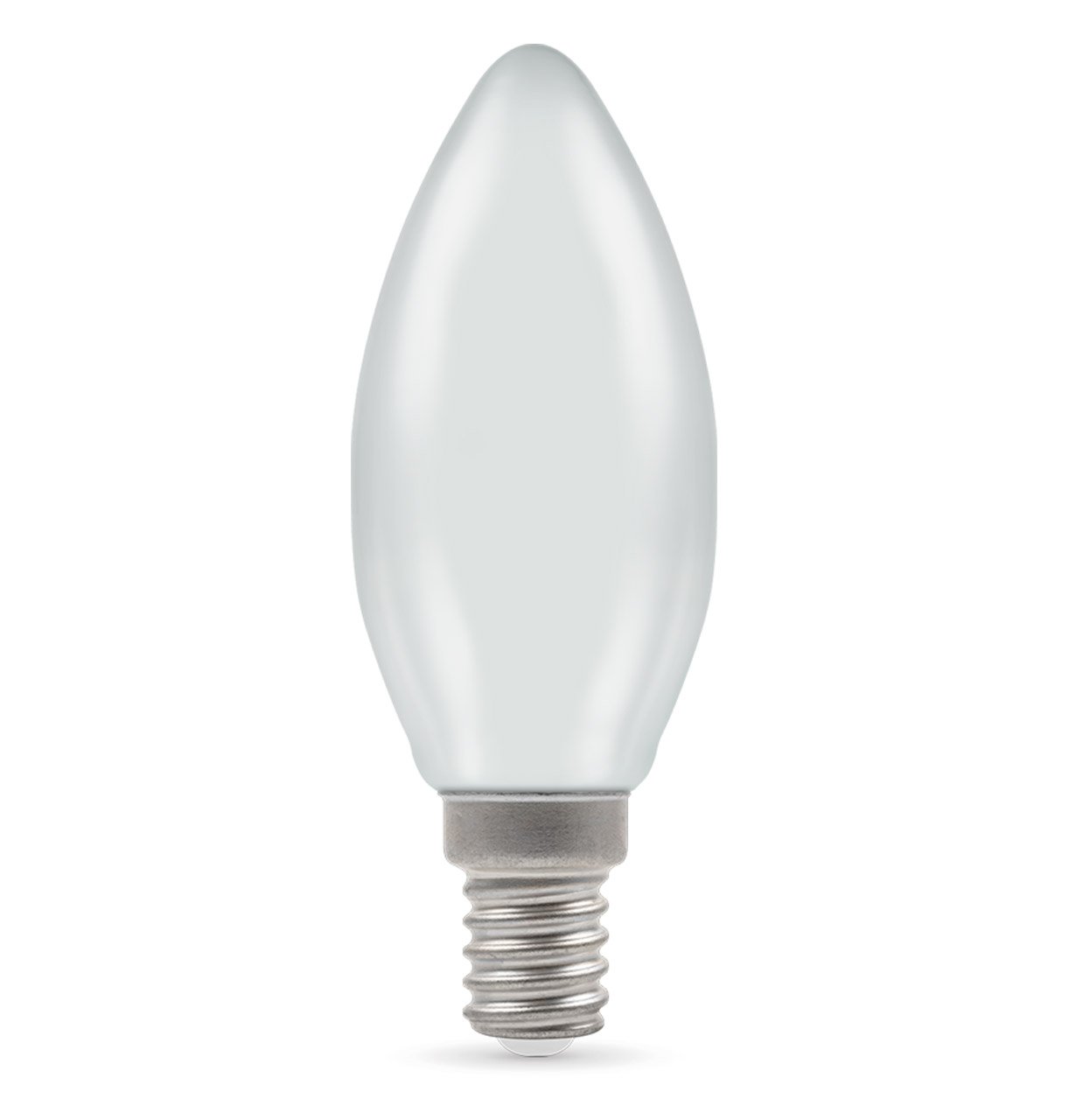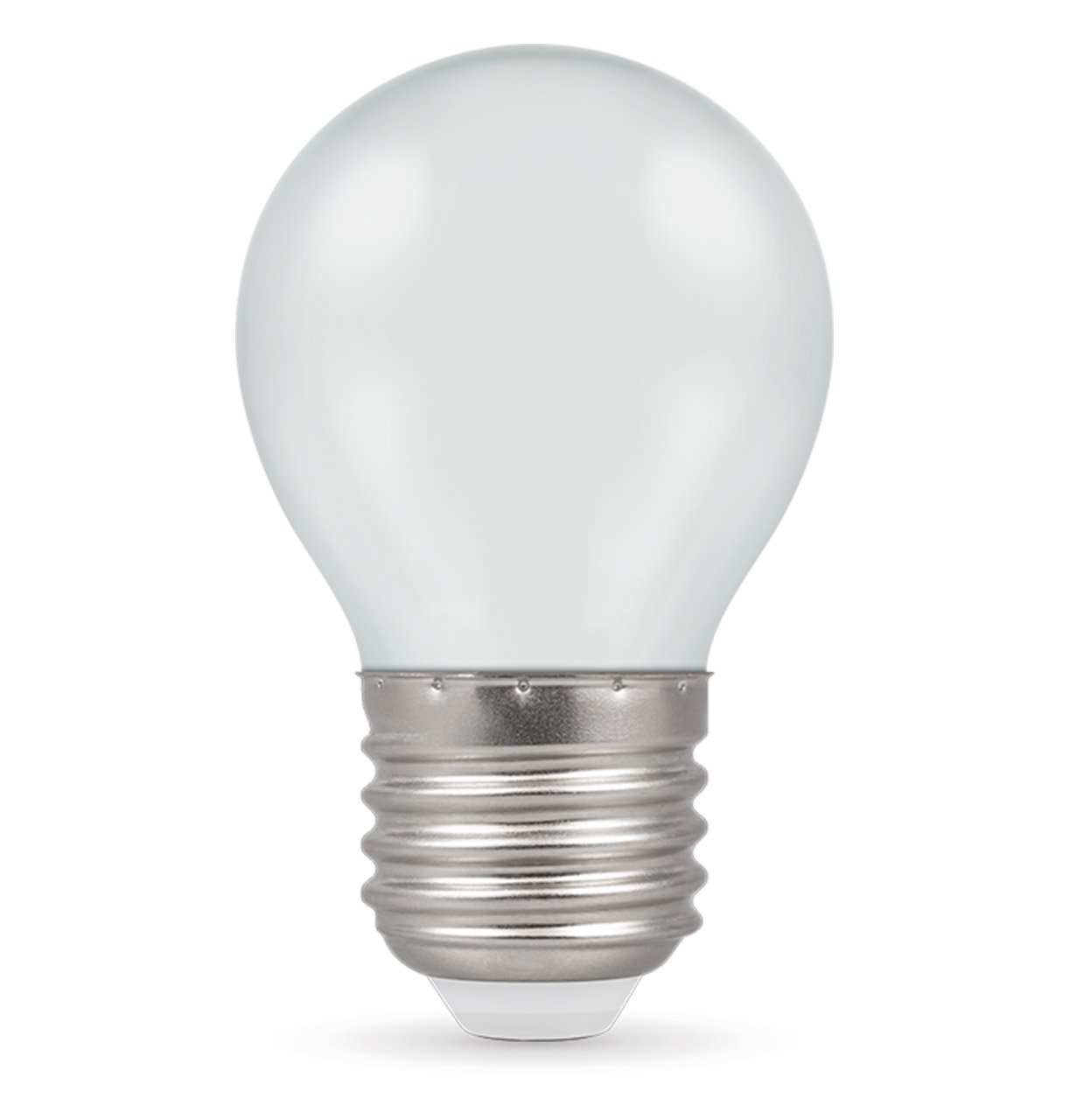It can be quite daunting standing in front of rows and rows of light bulbs, especially if you’re not sure what you’re actually looking at. Whether you’re looking at light bulbs, brightness tables or cap fittings, if you don’t have the right information, making a decision can be difficult.
In this easy-to-follow guide, we’ll tell you everything you need to know about lighting to help you choose the right light bulb for your home, and brighten it up in no time at all.
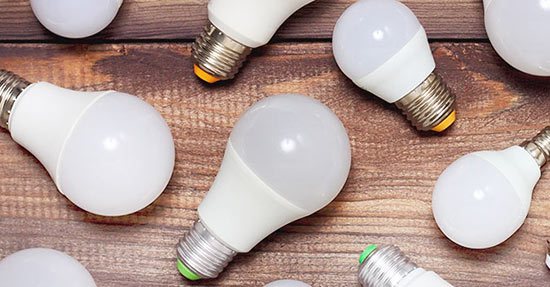
A Guide to Lightbulbs
Step 1: Understanding cap fittings
What are cap fittings?
A cap fitting is the part of the light bulb that connects the bulb to the socket of a light fixture.
Why are cap fittings important?
Before you start your search for the perfect light bulb, it’s important to find out the exact cap fitting you need as this will ensure your light bulb can be attached.
You can usually find this information on the packaging of the current light bulb you are using if you still have it. Alternatively, you can also look at the base of the bulb to figure this out too. At Lightbulbs Direct you can identify the cap fitting required for each bulb in our product descriptions.
Types of cap fittings
Bayonet Fitting
The bayonet cap has 2 pins attached to its base and uses a familiar “push and twist” motion to lock the bulb into place.
In terms of size, there are usually two main sizes of bayonet cap fitting available:
The numerical values attached to these fittings relate to the measurement across the light bulbs cap, in millimetres. For example, B22d is 22mm and B15d is 15mm.
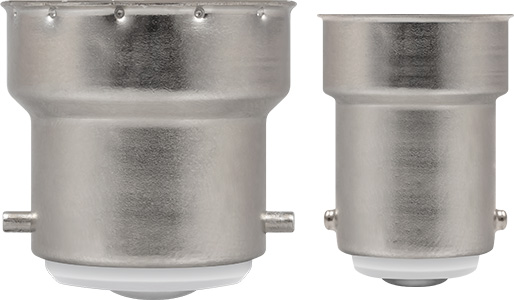
Screw Fitting
A screw fitting, also known as an Edison light fitting, is a light bulb with a screw style fitting as opposed to a bayonet fitting which uses pins.
The three main sizes of screw fitting include:
The numerical values attached to these fittings relate to the measurement across the light bulbs cap, in millimetres. For example, B22d is 22mm and B15d is 15mm.
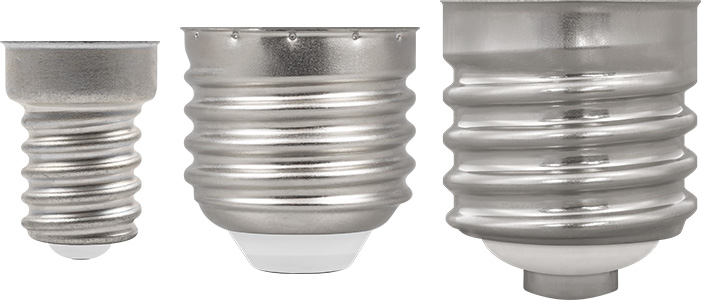
Step 2: Knowing the types of lightbulbs
What are the different light bulb shapes?
As well as knowing what kind of cap fitting you require, it’s also important to have an idea on what bulb shape you need.
In some cases, bulb replacements will need to be like-for-like due to the fitting. In other instances, you will need to choose a bulb according to its fixture and find something that suits its design. For example, a chandelier typically suits a candle shaped bulb.
The most common light bulb shapes include:

Traditional/GLS
General lighting service (GLS) light bulbs have a classic, pear-like shape and their traditional appearance has meant they are one of the most widely used light bulbs today. Usually, GLS light bulbs are fitted with a bayonet cap or screw fitting as these are the bases that are most commonly found on fixtures throughout the UK. More information can be found here.
Candle
Candle light bulbs are specifically designed to mimic the look of a flame from a candle and are more commonly found on more decorative fixtures where a more delicate bulb is needed. Chandeliers and wall lights all make use of this style of light bulb to create a warm, inviting atmosphere in a room.
Globe
Although similar in shape, a globe light bulb is much bigger and rounder than a GLS or golf ball light bulb. As a result, they aren’t typically found in homes but more in bars and restaurants where they can make a statement on larger ceiling lights. More information can be found on our globe light bulb buying guide.
Golf ball
Unlike a globe light bulb, golf ball light bulbs are compact and specifically designed to fit in small or decorative light fixtures that do not have the luxury of space. Due to the small size of these light bulbs, you will typically find that the actual bulb isn’t too much bigger than its base. Read more about golfball light bulbs on our golf ball light bulb buying guide.
Spotlight
A spotlight bulb is increasingly found in more modern homes today and is often found in rooms where bright, localised light is needed. Examples can include bathrooms, kitchens, and workspaces – if you’re stuck, have a look at our guide for spotlights.
Tubular
Tube lighting is more commonly used in office and industrial environments due to its fluorescent lighting which is both energy-efficient and long lasting, and makes it extremely cost-effective. Tubular lighting also comes in a range of different shapes, sizes, and colour temperatures to suit the individual needs of a building. Have a read of our guide to choosing fluorescent tubes for some more information about tube lighting.
Light Bulb Technology
There are four main types of light bulb that are available to customers at Lightbulbs Direct.
LED Light Bulbs
LED (Light-Emitting Diodes) light bulbs, are a cost-effective option chosen for homes today as they cost less to run, produce less heat and last much longer than traditional light bulbs. Though the initial cost of LED light bulbs can be slightly high, these light bulbs will save you money in the long-term due to their lower energy consumption.
If you wish to modernise your home further, smart LED bulbs allow you to control your lights remotely via an app, and often come in a wide range of colours to be decorative as well as functional.
Halogen Light Bulbs
Alternatively, halogen light bulbs are ideal for use in rooms where clear and bright illumination is needed, as they can reach full brightness instantly. However, due to this intensity they do have a much shorter lifespan and higher running costs compared to LED’s.
Incandescent Light Bulbs
Incandescent light bulbs were traditionally found in homes before LED and halogen light bulbs were used more regularly. However, incandescent light bulbs are still available to purchase and are sold in a range of popular shapes, sizes, and colours.
Energy Saving CFL
Energy saving solutions have become a top priority for homeowners recently. You can save money with cost effective, low energy light bulbs (CFL). By using energy efficient light bulbs, it is possible to save up to 80% on electricity bills compared to incandescent light bulbs.
At Lightbulbs Direct, we currently offer Crompton Lamps A-Class LED Light Bulbs. Using the latest in LED technology, Crompton’s light bulbs are 60% more efficient than regular LED light bulbs and last over 27 years.
Not only do we offer light bulbs that are perfect for homes and hospitality, but our range of specialist and fluorescent light bulbs are ideal for office buildings, hospitals, dentists, as well as other sectors.
How to measure light bulb brightness
Traditionally, light bulb brightness has been measured in Watts (W). However, Watts only measure the overall power consumption of the light bulb. Where modern light bulbs use substantially less power whilst producing the same level of brightness, you’ll need to think in terms of lumens (lm) when looking at the brightness of a new light bulb.
What is a lumen?
A lumen measures the light output from a light bulb. The higher the number of lumens a light bulb has, the brighter it will be.
In all of our product descriptions, you will be able to see the lumens of each light bulb, as well as the equivalent wattage of an incandescent light bulb.
The amount of lumens you require from your light bulb will depend on where it will be used in your home and whether you need it for general lighting, accent lighting or task lighting. For example, in the kitchen or bathroom, brighter task lighting will be needed and therefore your bulb will need to have a higher amount of lumens.
What colour temperature should a lightbulb be?
When choosing new light bulbs it’s important to take colour temperature into account. Whilst this can be chosen based on personal preference, having the right colour temperature in a room will help to create different atmosphere’s and perform different tasks.
What is a Kelvin?
A kelvin is the measure of how warm or cool a light bulb is and the Kelvin scale measures the colour temperature of the light.
The higher the number of Kelvins (K) a light bulb has, the whiter the light is.
Typically, low Kelvins produce warmer coloured light and are great for creating cosy mood lighting. Because of this, these light bulbs are used in living rooms, dining rooms, bedrooms, and hallways.
On the other hand, higher Kelvins produce bright, white light which helps to create an energised and vibrant atmosphere in a room. This is why high Kelvin light bulbs are used in kitchens, bathrooms, and study rooms.
Step 3: Choosing the right lighting for your room
Once you’ve figured out the basics of light bulbs, you can start to think about your room’s lighting design.
Map out your light design
Before making any permanent lighting decisions, it’s important to consider the mood of your room and how you can use different types of lighting to create your desired atmosphere.
Traditionally, many people tend to only consider their ceiling light as their primary source of light. However, it is often better to layer your lighting design to get the ultimate ambient atmosphere. When it comes to layering lighting, there are 3 different types:
- Ambient/General lighting – soft lighting that gives a room an ambient glow. This light source usually comes from ceiling lights.
- Task lighting – task lighting is bright, localised lighting that helps a person perform a task e.g. reading.
- Accent lighting – this type of lighting is usually decorative and adds drama to a room.
The most attractive lighting designs often start with task and accent lighting as the combination of both create enough lighting for the room without the need for an overhead light fixture.
When it comes to designing your space, why not consider planning how you are going to use the space first. Add in a wall light or floor lamp as your form of task lighting in places you’ll likely want to read or write.
Next, add in your accent lighting to add a bit more interest into your room.
Finally, add in your primary source of ambient lighting in the form of a general light fixture, and you should be able to achieve a balanced lighting design in your home.
Know your style
Now that you’ve figured out where your lighting is going to go, you can start to consider the aesthetic of your design. Whether your style is minimalist, maximalist, modern, or vintage, your light fixtures will help to create the design aesthetic you want.
Design features such as textures, colours and finishes will all make a difference to your light layout. Lamp shades are a simple way to add texture or colour to a room without being overpowering.
How to choose the perfect lighting?
Choosing the lighting for your home can be a daunting task, especially if you’re unsure about all the technical information that comes with purchasing new lights.
By using this guide, you’ll have a simple understanding of everything you need to know when it comes to buying new light bulbs for your home.
You can explore and shop our range of light bulbs here.

 UK's #1 Lightbulb Retailer
UK's #1 Lightbulb Retailer
 Free Delivery Orders Over £50
Free Delivery Orders Over £50
 Trade Customers Exclusive Benefits
Trade Customers Exclusive Benefits
